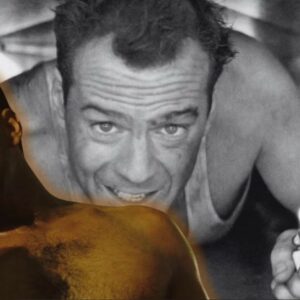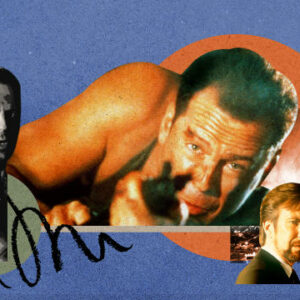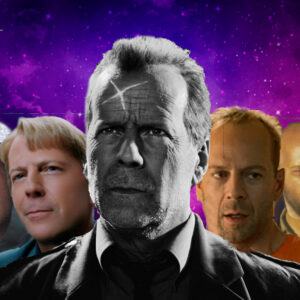In the sprawling landscape of contemporary cinema, where actors often find themselves contending for visibility amidst a cacophony of talent, Cillian Murphy stands as a singular force. With his enigmatic presence and a chameleonic ability to embody a diverse array of characters, Murphy has carved out a niche that distinguishes him from his peers. His prominence in the acting world, particularly in psychological thrillers and dramatic roles, prompts a deeper exploration of what sets his craft apart. This article delves into the distinctive elements of Murphy’s acting style, comparing his methods with those of other leading actors to illuminate the nuances that define his unique approach.
Cillian Murphy: An Overview
Born in Douglas, County Cork, Ireland, in 1976, Cillian Murphy’s rise to prominence has been nothing short of remarkable. With a career that spans over two decades, Murphy has garnered critical acclaim for his work in both independent and mainstream cinema. His breakthrough role came with the 2002 film “28 Days Later,” a post-apocalyptic thriller that showcased his capacity for intense, visceral performances. Murphy’s subsequent roles in films such as “The Dark Knight Trilogy” and “Inception” have solidified his reputation as a versatile and compelling actor.
Murphy’s choice of roles often gravitates towards psychological thrillers and intense dramas, genres that demand a high degree of emotional investment and psychological depth. This affinity for complex characters and narratives has not only distinguished him in the acting world but also provides a rich tapestry for comparing his methods with other leading actors.
Cillian Murphy’s Acting Style
Versatility and Range
One of the most striking aspects of Cillian Murphy’s acting is his extraordinary versatility. His ability to inhabit a wide range of characters—from the tormented protagonist in “Peaky Blinders” to the cold, calculating villain in “The Dark Knight” series—demonstrates a profound adaptability. Murphy’s performances are marked by a seamless transition between contrasting roles, a skill that underscores his extensive range as an actor.
For instance, in “Peaky Blinders,” Murphy portrays Thomas Shelby, a character that blends charisma with underlying menace. His portrayal of Shelby is nuanced, capturing the character’s complex psychology with a depth that resonates throughout the series. This role contrasts sharply with his portrayal of Dr. Jonathan Crane in “Batman Begins,” where Murphy exudes a chilling, almost otherworldly presence. The stark difference in these performances highlights Murphy’s ability to navigate diverse genres and character archetypes with ease.
Emotional Depth and Intensity
Murphy’s performances are characterized by an emotional depth that engages the audience on a visceral level. His ability to convey complex emotional states, often with minimal dialogue, sets him apart from his peers. In “A Quiet Place Part II,” for example, Murphy’s portrayal of Emmett is marked by a profound sense of loss and despair, conveyed through subtle facial expressions and restrained body language. This restraint allows the audience to delve deeper into the character’s psyche, fostering a more intimate connection with the narrative.
This emotional intensity is not only a testament to Murphy’s talent but also a hallmark of his acting style. His performances are often distinguished by a deliberate focus on psychological nuance, a trait that aligns him with actors like Joaquin Phoenix and Daniel Day-Lewis, who are also known for their intense, emotionally charged portrayals.
Transformation and Immersion
Murphy’s dedication to character transformation is another defining feature of his acting approach. His willingness to undergo significant physical and psychological changes for a role demonstrates a commitment to authenticity that is rare among actors. For instance, in “The Wind That Shakes the Barley,” Murphy underwent a physical transformation to portray a revolutionary fighter, immersing himself fully in the historical context of the film.
This level of immersion is reminiscent of the methods employed by actors such as Christian Bale and Gary Oldman, who are also known for their transformative approaches. However, Murphy’s method often involves a more subtle transformation, focusing on the internal rather than the external. This approach allows him to maintain a sense of realism and relatability in his performances, even as he navigates dramatic shifts in character.
Comparing Murphy with Peers
The Psychological Approach: Murphy vs. Joaquin Phoenix
Joaquin Phoenix is another actor known for his intense psychological portrayals. Phoenix’s performances, such as in “Joker” and “Her,” often delve into the darker aspects of human psychology, much like Murphy’s roles in psychological thrillers. Both actors share a penchant for exploring the complexities of mental states, yet their approaches differ.
Murphy tends to embody characters with a more subdued psychological intensity, relying on subtle cues to convey inner turmoil. Phoenix, on the other hand, often embraces a more overtly emotional and visceral approach, allowing for a broader range of expression. While both actors excel in portraying psychological depth, Murphy’s style is characterized by a quieter, more introspective intensity.
The Chameleonic Nature: Murphy vs. Christian Bale
Christian Bale’s career is marked by a series of transformative performances that showcase his ability to reinvent himself for each role. Like Murphy, Bale is known for his commitment to character transformation, but his approach often involves more pronounced physical changes.
In films such as “The Machinist” and “American Psycho,” Bale undergoes significant physical transformations that are integral to his portrayal. Murphy’s transformations, while equally compelling, tend to focus more on psychological and emotional shifts rather than dramatic physical changes. This distinction highlights Murphy’s emphasis on internal character development as opposed to external alterations.
The Subtlety of Performance: Murphy vs. Gary Oldman
Gary Oldman is renowned for his ability to disappear into his roles, a trait that aligns closely with Murphy’s approach. Both actors excel in creating characters that are deeply immersive and believable, often through subtle performance choices.
Oldman’s performances, such as in “The Darkest Hour” and “Tinker Tailor Soldier Spy,” are characterized by a meticulous attention to detail and a capacity for subtlety. Similarly, Murphy’s performances often rely on nuanced gestures and expressions to convey complex emotions. The similarity in their styles underscores a shared commitment to creating deeply layered characters, albeit with different techniques.
Conclusion
Cillian Murphy’s unique acting approach stands out in a crowded field of talented actors due to his remarkable versatility, emotional depth, and dedication to character transformation. His ability to seamlessly transition between diverse roles, combined with a profound psychological insight, sets him apart from his peers.
While comparisons with actors such as Joaquin Phoenix, Christian Bale, and Gary Oldman reveal both similarities and differences, Murphy’s distinctive style is characterized by a subtle yet powerful intensity. His performances, marked by an emphasis on internal emotional states and a commitment to authenticity, continue to captivate audiences and define his place in the acting world.
In exploring the nuances of Murphy’s approach, we gain a deeper understanding of what makes his performances so compelling. His method, marked by versatility, emotional depth, and subtle transformation, not only highlights his exceptional talent but also contributes to a richer, more diverse cinematic landscape. As he continues to navigate the complexities of his craft, Cillian Murphy remains a singular and influential force in the world of acting.
4o mini





